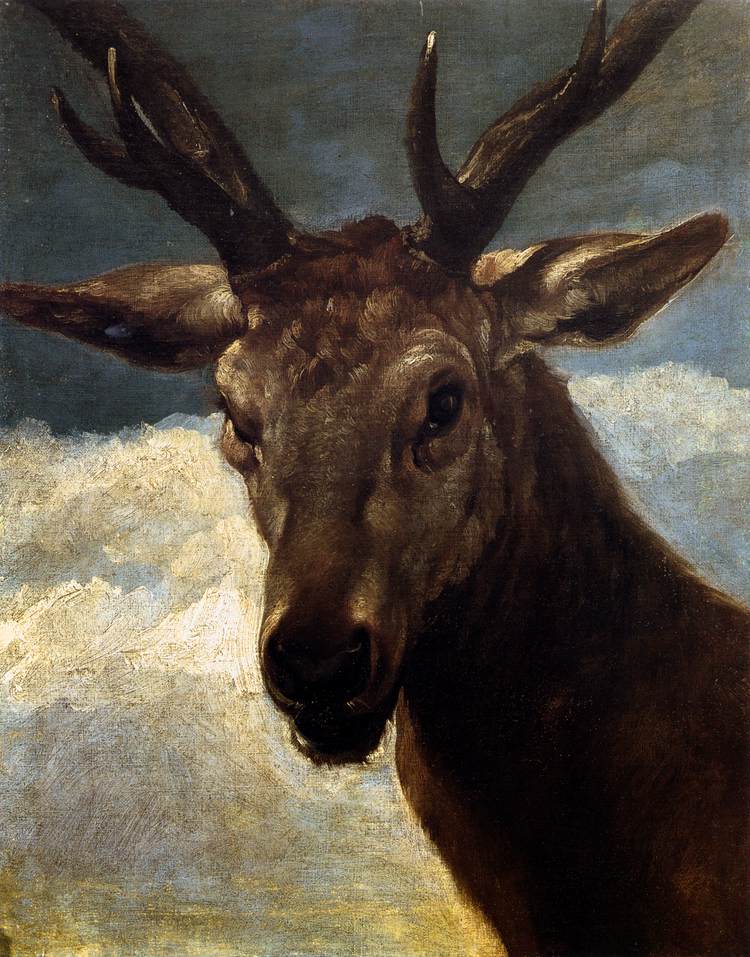Description
"Head of a Stag" is a fascinating painting by the Spanish artist Diego Rodríguez De Silva Y Velázquez. Originally sized at 66.5 x 52.5 cm, this work stands out for its unique artistic style, intriguing composition, and masterful use of color.
Velázquez's artistic style in "Head of a Stag" shows his ability to capture the essence and beauty of nature in a realistic manner. The artist uses loose, precise brushstrokes to create the texture of the deer's fur, conveying a sense of movement and life in the painting. In addition, Velázquez manages to depict the deer's eyes in great detail, conveying a captivating and penetrating look that seems to follow the viewer.
The composition of the painting is another interesting aspect of "Head of a Stag". Velázquez chooses to focus on the deer's head, allowing him to capture the expression and majesty of this animal. The head of the deer is in the foreground, occupying a large part of the work, which creates a feeling of closeness and intimacy with the viewer. This choice of composition also highlights Velázquez's skill in depicting the deer's anatomy and detail.
As for color, Velázquez uses a palette of earth tones and browns, which reflect the natural colors of the deer and its habitat. The artist also uses subtle brushstrokes of white and gray to render light reflections on the deer's fur, giving it a realistic, three-dimensional appearance.
The history of "Head of a Stag" is enigmatic and little known. Although the purpose or context of this painting is not known with certainty, it is believed that Velázquez made it as a study of the anatomy and expression of animals. This work shows the artist's ability to represent the beauty and complexity of nature, and his interest in exploring different themes in his art.
In short, "Head of a Stag" is a captivating painting noted for its realistic art style, intriguing composition, and masterful use of color. Through this work, Velázquez invites us to appreciate the beauty of nature and reflect on the relationship between man and animals.

